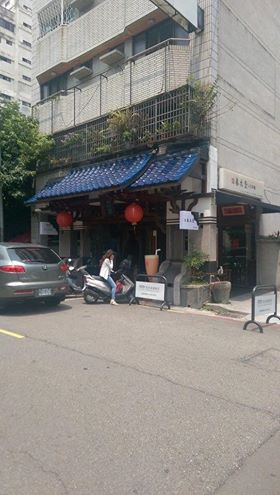ABOUT OUR FOOD

OG Boba Tea House in Taichung, Taiwan.
What Is Boba Tea?
Boba tea was developed by Liu Han-Chieh and Lin Hsiu Hui in Taichung, Taiwan during the 1980’s. Lin Han-Chieh came up with the idea of milk tea after seeing how the Japanese added milk to their coffee. The new milk tea boosted the popularity of his teahouse immensely and Lin Hsiu Hui, who was product manager at the time, created the pearls by combining tapioca ball and sweetened pudding with the iced tea. Since then, the popularity of boba has spread from Southeast and East Asian countries to mainly the US and Canada.
What Is Oolong Tea?
When you drink specialty coffee, your first question might be about the origin. Is it a chocolaty Brazilian, a fruity Ethiopian, or a balanced Guatemalan? But when it’s tea, you want to know how it was processed – because that’s the difference between black/red, green, yellow, white, and oolong.
Tea processing centres around something called oxidation, which is the process of exposing the leaves to oxygen. This begins as soon as the leaves are picked, and there are different ways to increase or halt it. Oxidation darkens the leaves and causes them to wilt. It also adds aromas and flavours.
White, yellow, and green teas are very lightly processed. Black/red tea, as the name suggests, is heavily processed. And oolong tea? There is a huge diversity in how much oxidation happens for an oolong tea, but generally speaking, it’s more oxidezed than white/yellow/green tea and less than black tea – making it, in my opinion, the Goldilocks of the tea world.
Oolong tea is carefully monitored while it oxidizes. And it’s this process that creates its unique golden-brown color and distinctive aromas.
Oolong Tea Processing
The processing of the tea after harvesting accounts for much of the diversity and uniqueness of Taiwanese oolongs. Although processing techniques will vary by region and by farmer, the basic process is fairly standardized. After the leaves are picked, they are dried in the sun for several hours, weather permitting. Then, the leaves are brought indoors where they are gently shaken in bamboo baskets or a rolling drum. This shaking serves to slightly “bruise” the leaves and start the oxidation process. It is during this stage that the aroma begins to develop.
After a partial oxidation, the leaves may be either rolled into the shape of a pearl or twisted sideways into long strips. After the initial shaping, the tea is fired at high temperature to stop any further oxidation. For pearl-shaped oolong teas, such as Dong Ding, the rolling and drying phases may be repeated a number of times. For the twisted-leaf shaped oolongs, such as Bao Zhong, the rolling process is more delicate to preserve the natural shape of the leaves. Once the tea is dried, it is known as “mao cha” or raw tea. This type of tea is often sold as green-style oolong, which is the most popular style of oolong tea in Taiwan.
The raw tea may be further roasted (or baked) to enhance both aroma and flavor characteristics. The roasting level can be light, medium or dark. The lightly roasted teas generally retain more of a floral character while the medium and dark roasted teas develop a sweeter, fruitier and toastier character.
Taiwan’s High Mountains: A Unique Terroir
Just like with single origin coffees and fine wines, each tea plantation is unique. The terroir produces distinctive flavors while each year’s particular weather trends will add its own character to the season’s harvest.
While you can find High Mountain Oolong Tea in other countries, such as Thailand and Vietnam, it is most associated with Taiwan. And this is partly due to Taiwan’s mountains, which make for an ideal tea-growing environment.
“High Mountain” tea is grown at elevations of more than 1,000 m.a.s.l. The plantations in Taiwan are marked by high amounts of humidity and natural precipitation. The tea leaves typically remain blanketed in fog until they are carefully picked by hand.
This tea is known for its complex flavors, aromas, and aftertastes. This, in combination with limited supply, can lead to steep prices – but if you ask me, it’s always worth it.
A Historic Tradition for Modern-Day Drinkers
Drinking oolong tea is a long tradition in Taiwan – it’s even part of traditional Chinese medicine. And the preparation and appreciation of the beverage are almost as important as the actual tea itself.
Small, hand-crafted teapots made of unglazed clay are the preferred vessel for brewing oolong. The pots, along with teacups, trays, and other accessories, are collected by connoisseurs of the Chinese art of tea.
If you come to Taiwan and drink High Mountain Oolong Tea here, you’ll see that we pour hot water into a pot full of dry leaves and then immediately pour it back out. This is then discarded. We do this tto remove any dust or other contaminants from the tea, allowing drinkers to enjoy the pure flavor and aroma that remains.
In Taiwan, the art of tea is about more than just drinking the beverage. You should savor the taste and take your time. It is considered an art form that takes a lifetime to master.
